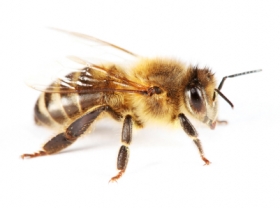Bee colonies continue to decline
| Honey bee population declines continue to trouble the U.S.
agricultural industry. America’s honey bees are responsible for
pollinating more than 100 different crops worth $15 billion annually and
continue to experience population decreases as evidenced by a study
commissioned by Apiary Inspectors of America, (AIA). (An
apiary is a bee yard
or collection of hives.) An AIA commissioned survey of U.S. beekeepers
estimates colony losses across the country between September 2007 and
2008 were 36.3 percent which equates to 14 percent more total losses
compared to last year (note: roughly 13% of the country’s 2.4 million
colonies was surveyed). Nearly 70% of losses are attributed to non-CCD
causes, such as lack of food.
Haagen-Dazs Help the Honey Bees program is donating $250,00 for a study of the problem by Pennsylvania State University and the University of California, Davis, by donating a portion of sales of its honey bee dependent flavors. |
 |
Home owners and gardeners are encouraged to do their part by planting pollen and nectar producing plants. The ubiquitous green lawn is a food-free wasteland for honey bees, so by planting honey bee-friendly flowering plants people can help nourish and sustain bee populations. Haagen-Dazs is also working with community groups to distribute 1 million bee-friendly flowering seeds and provide educational info on the issue.
2007. Copyright Environmental News Network To subscribe or visit go to: http://www.enn.com